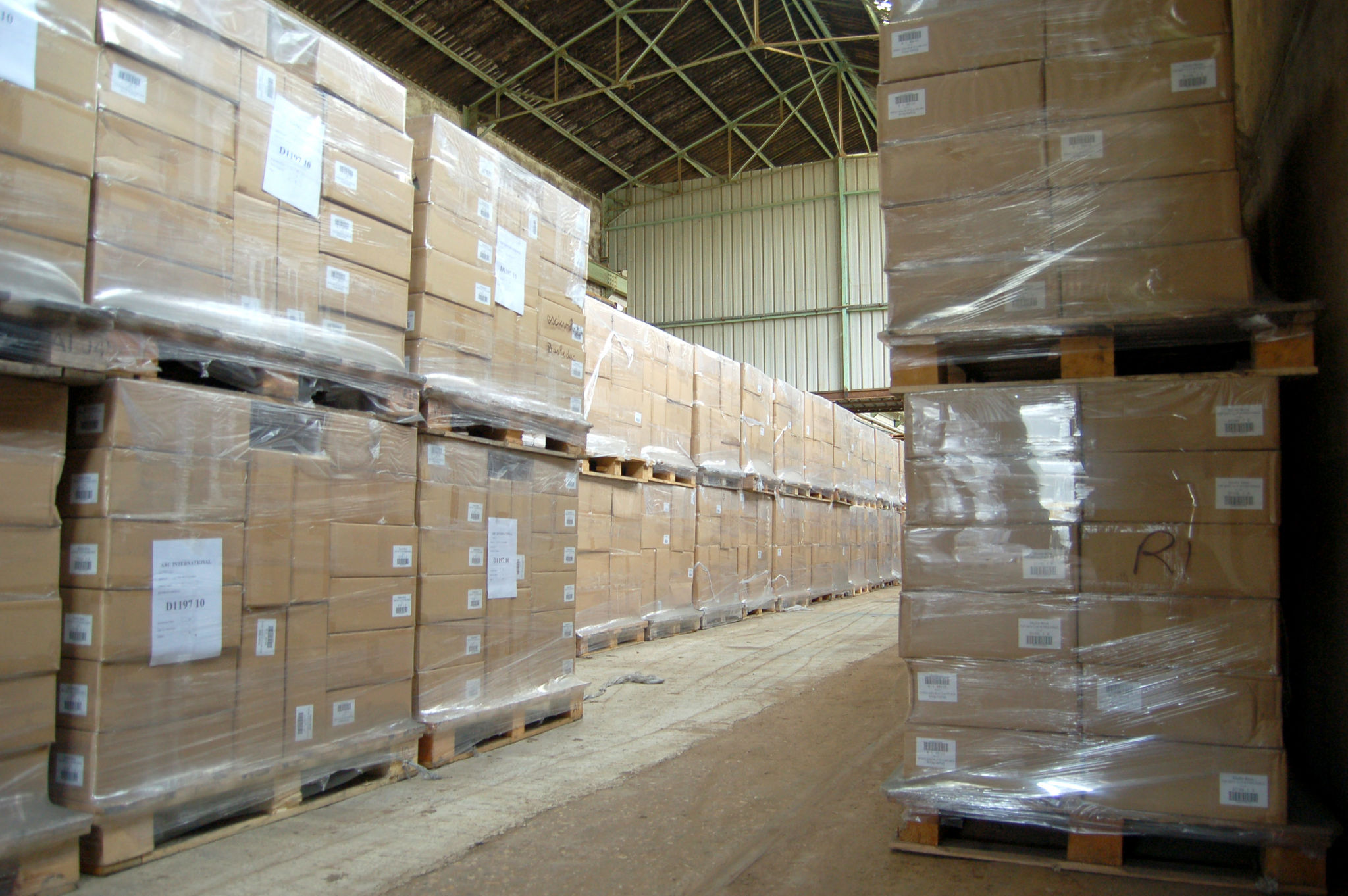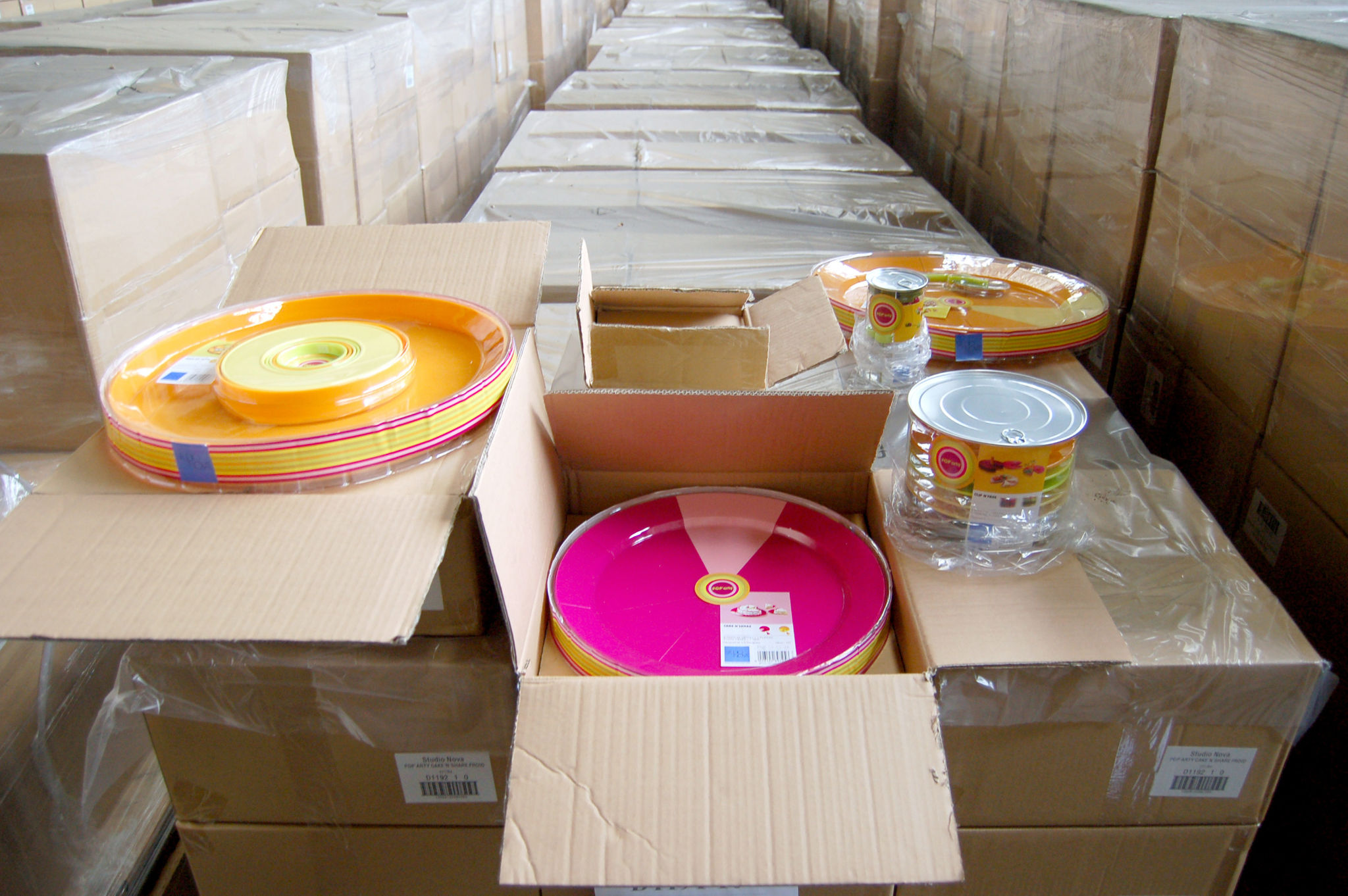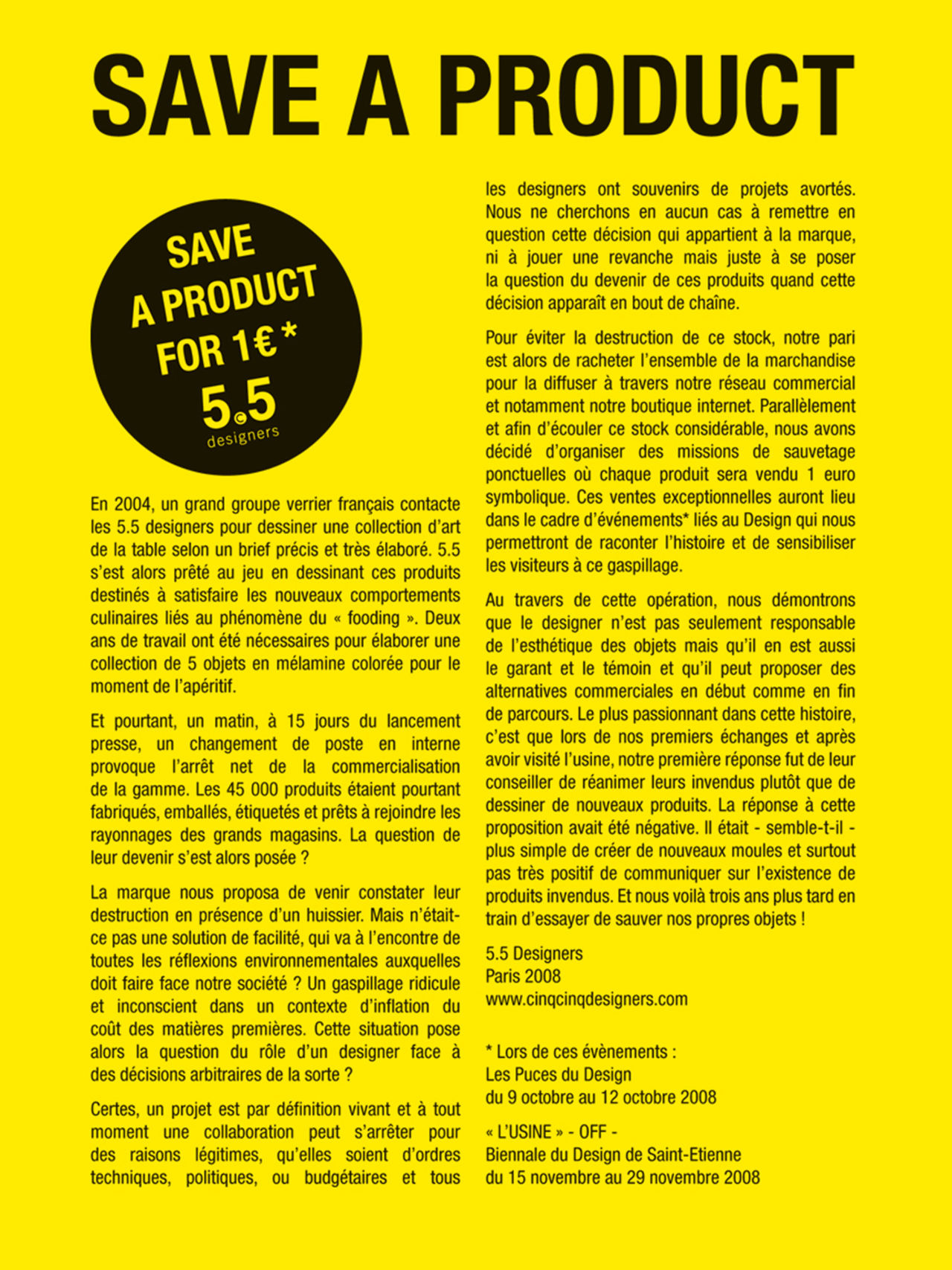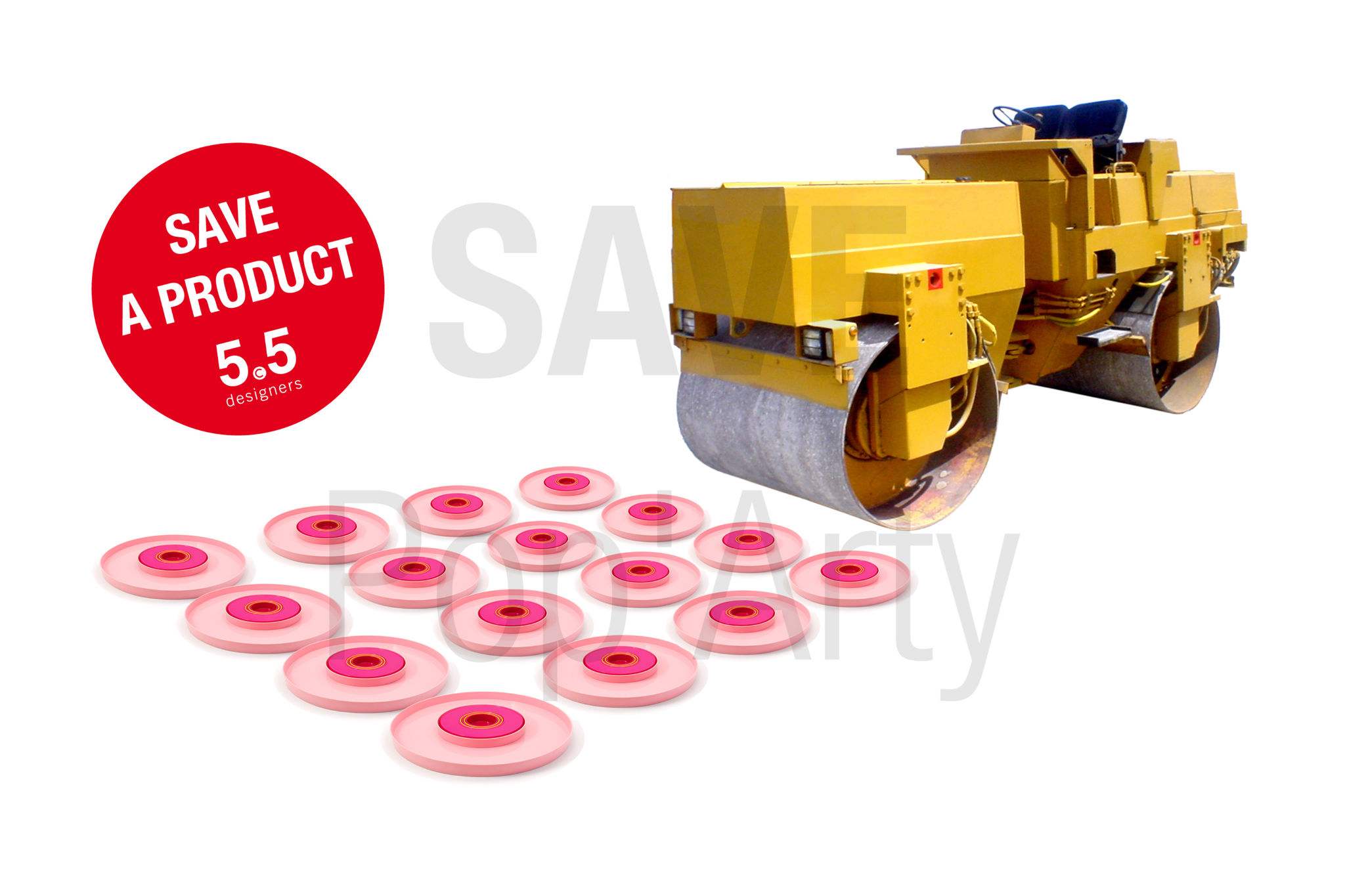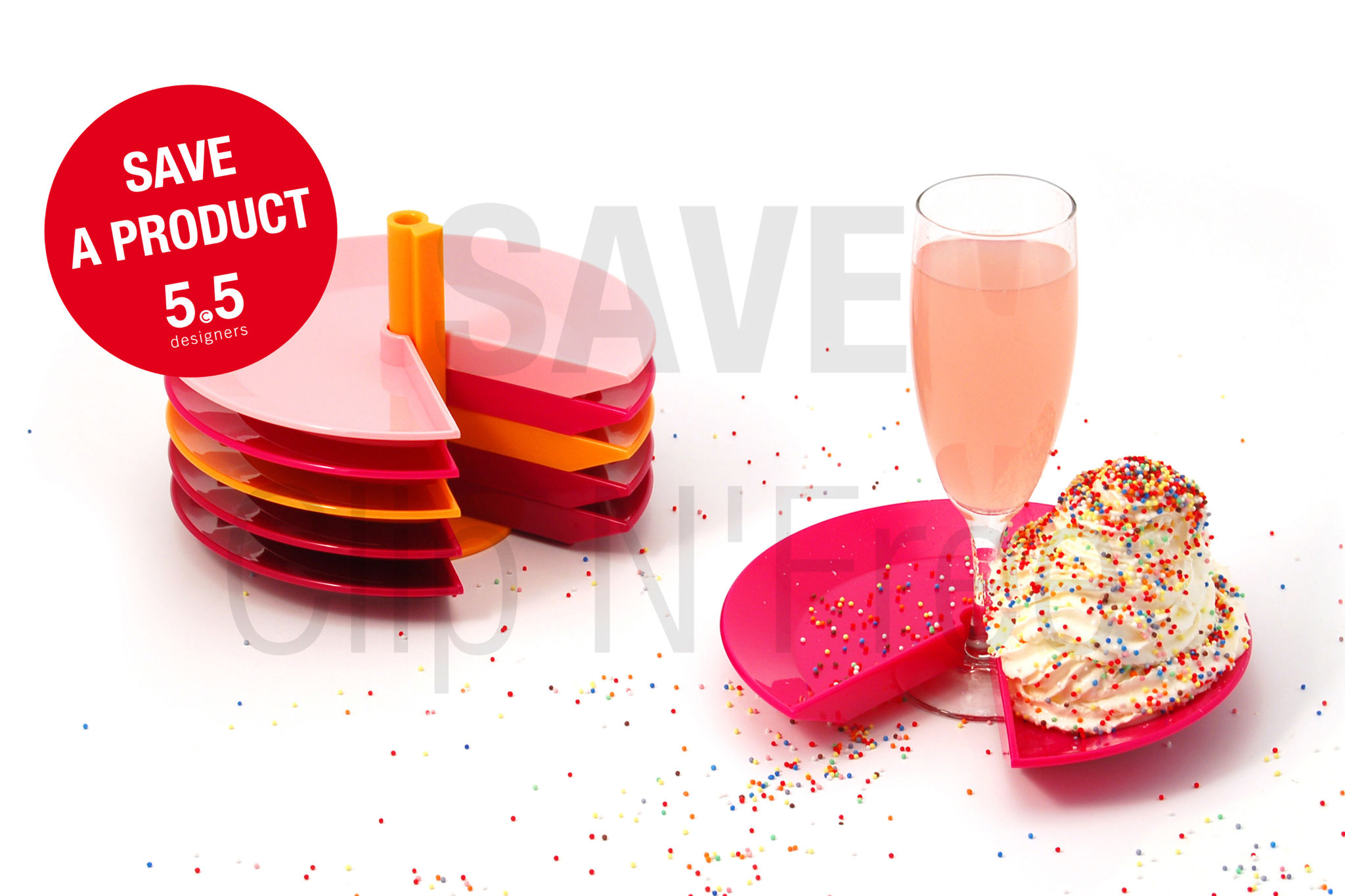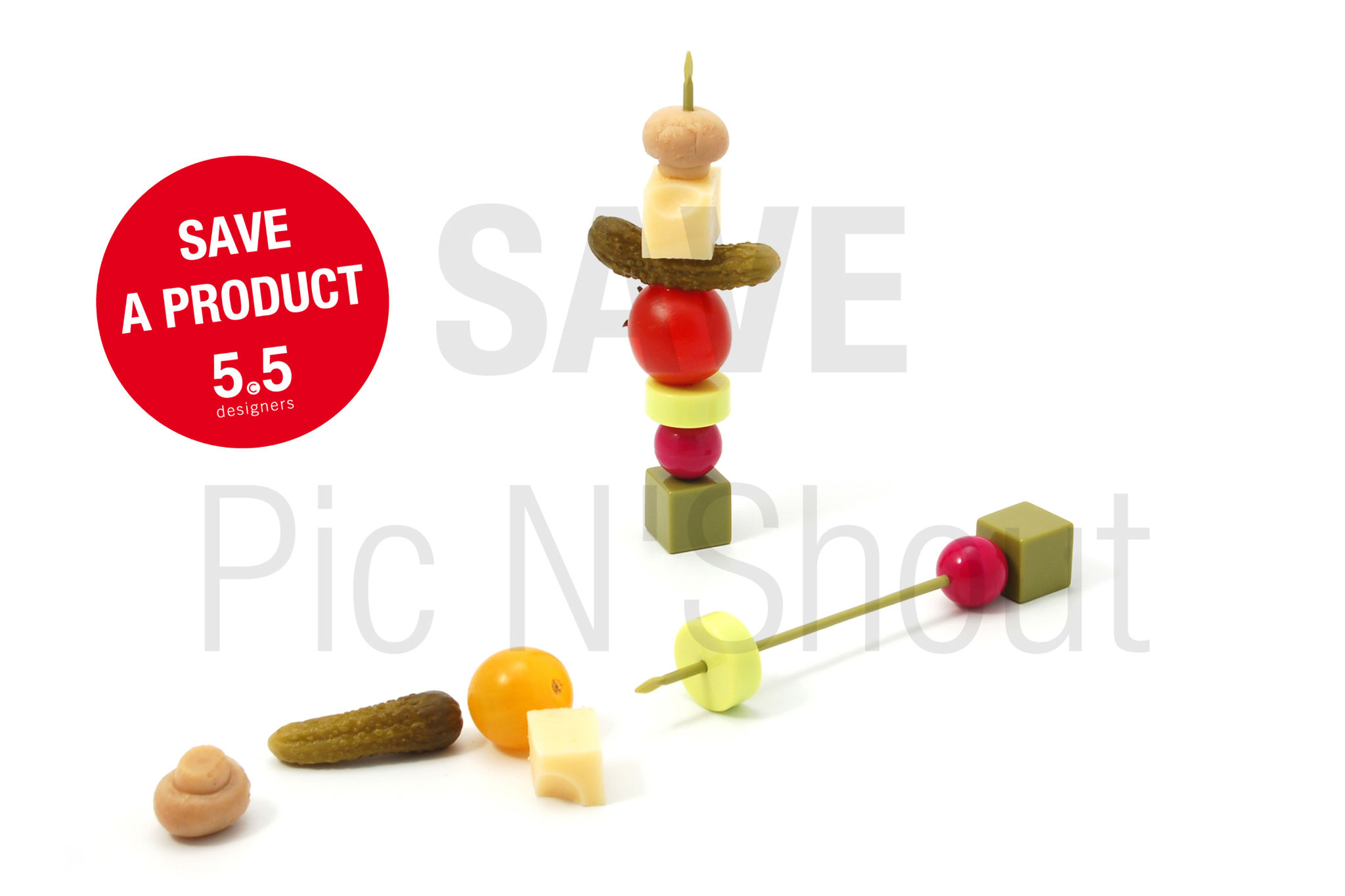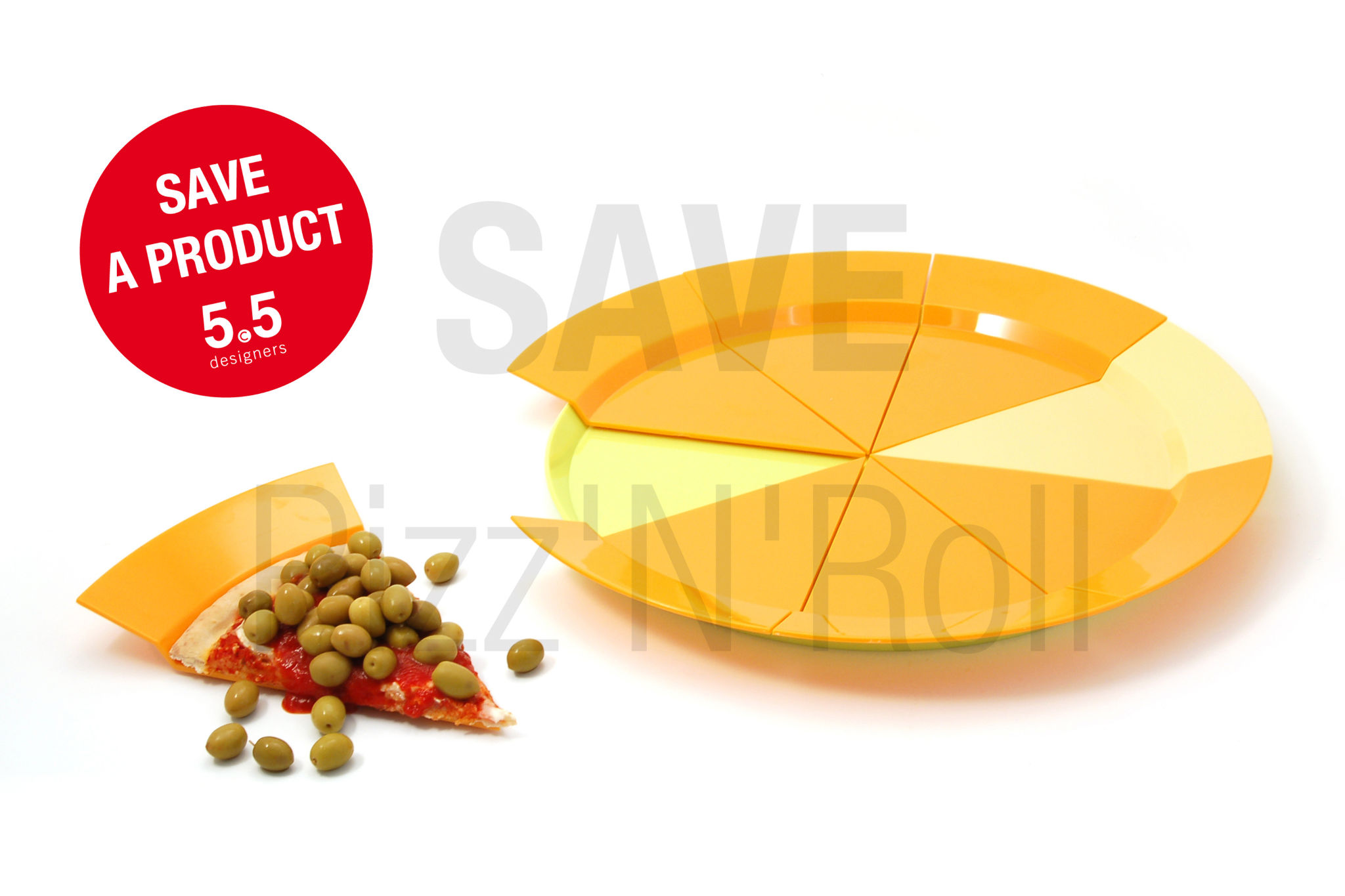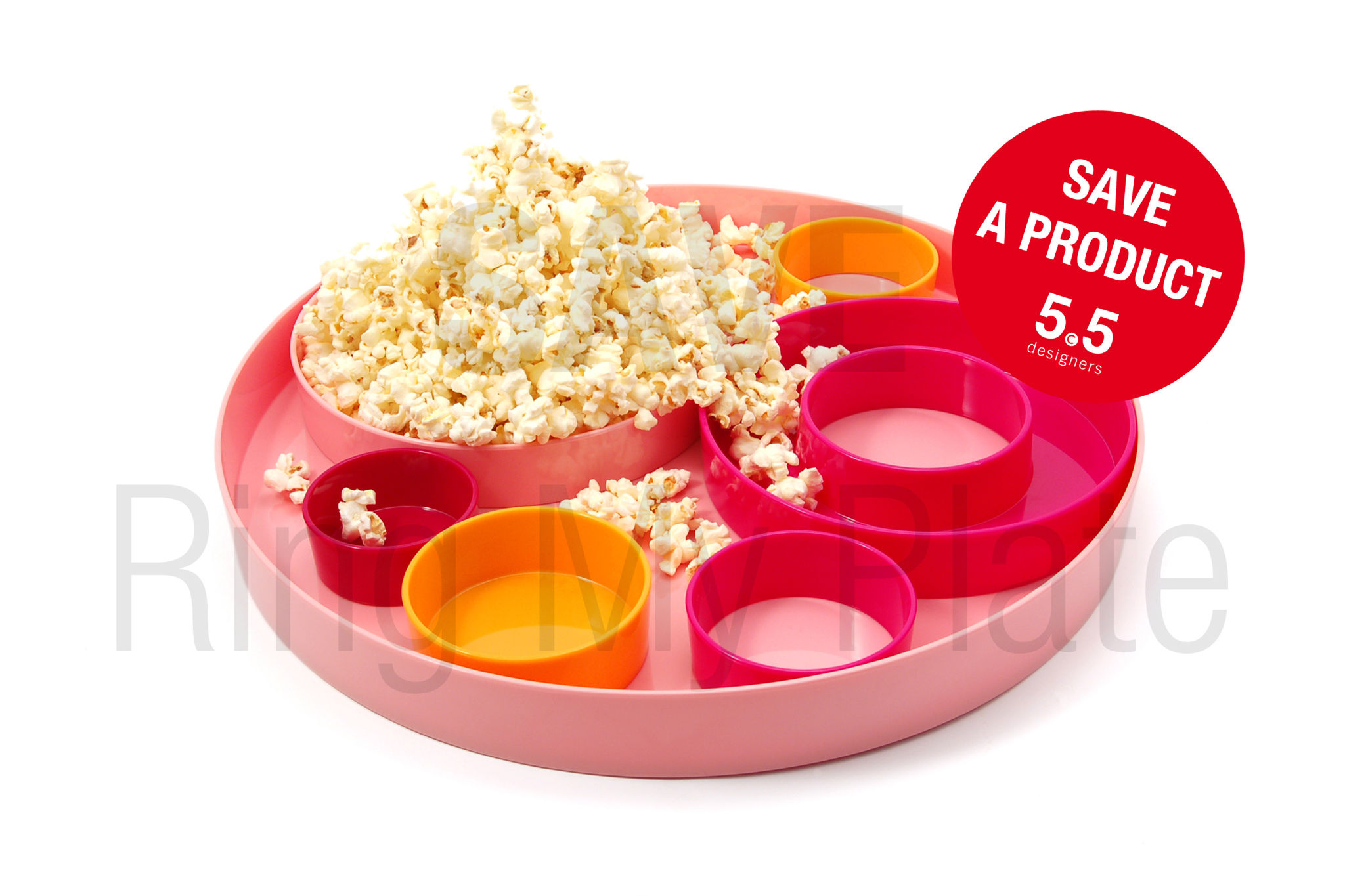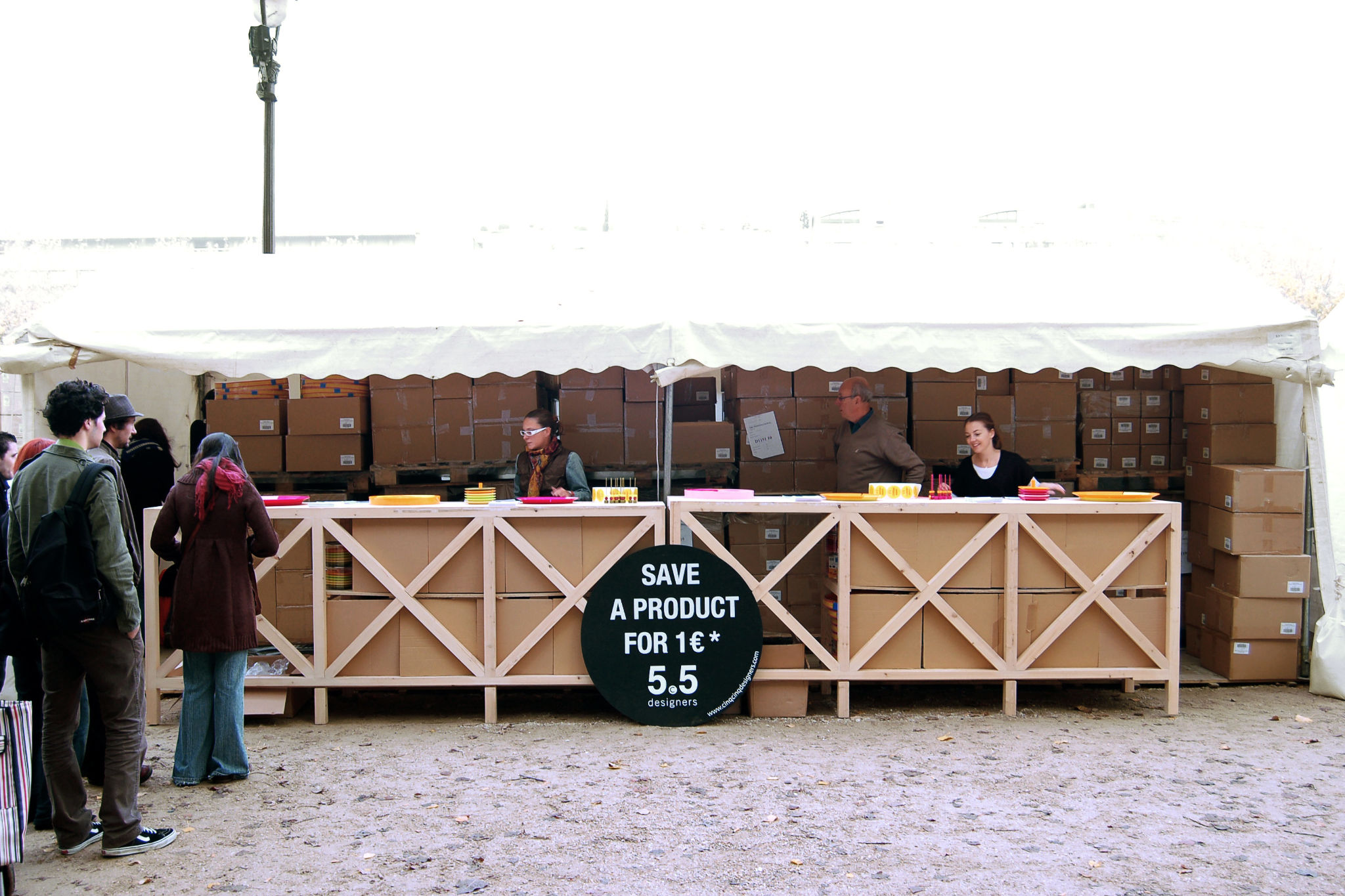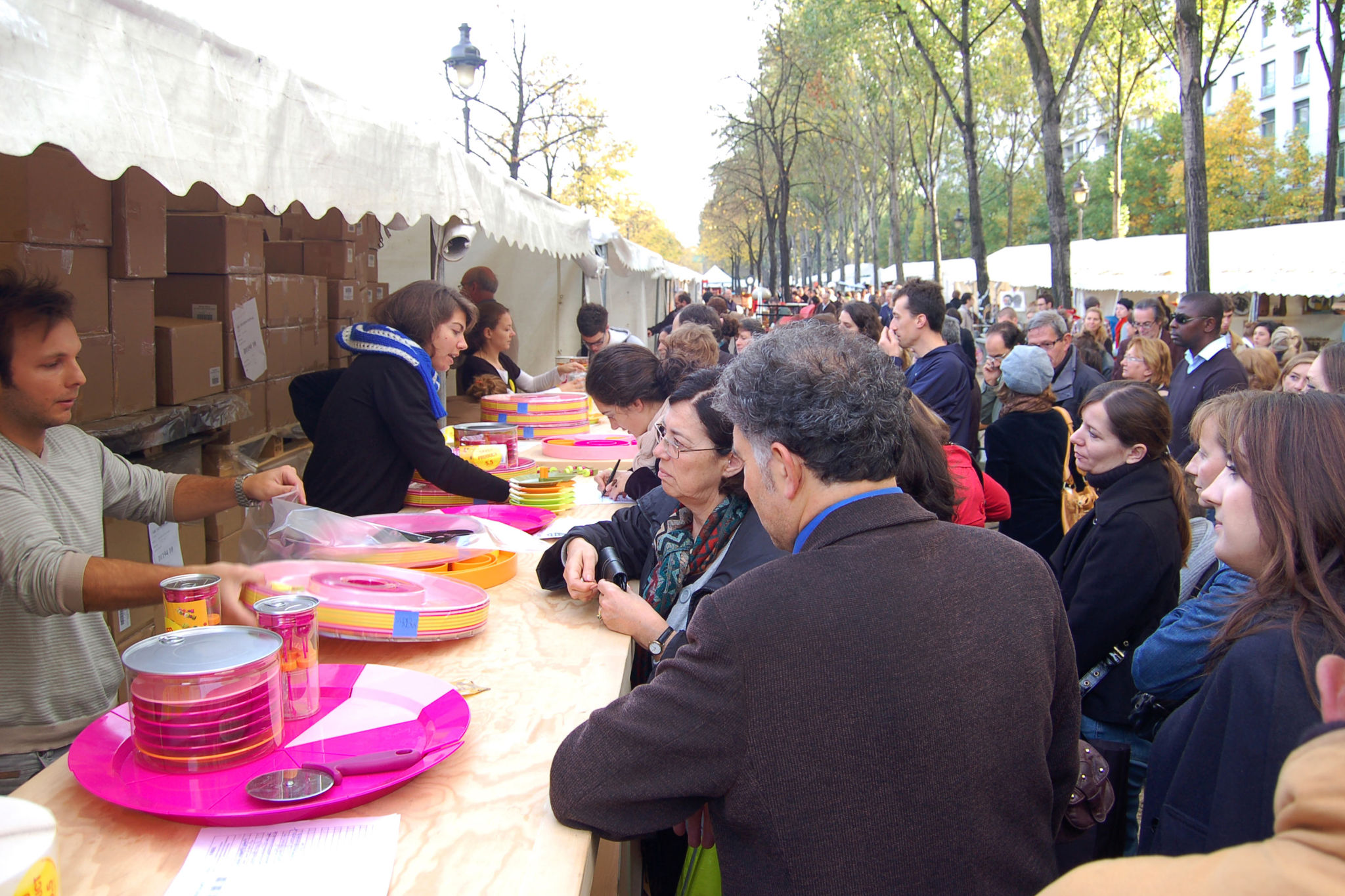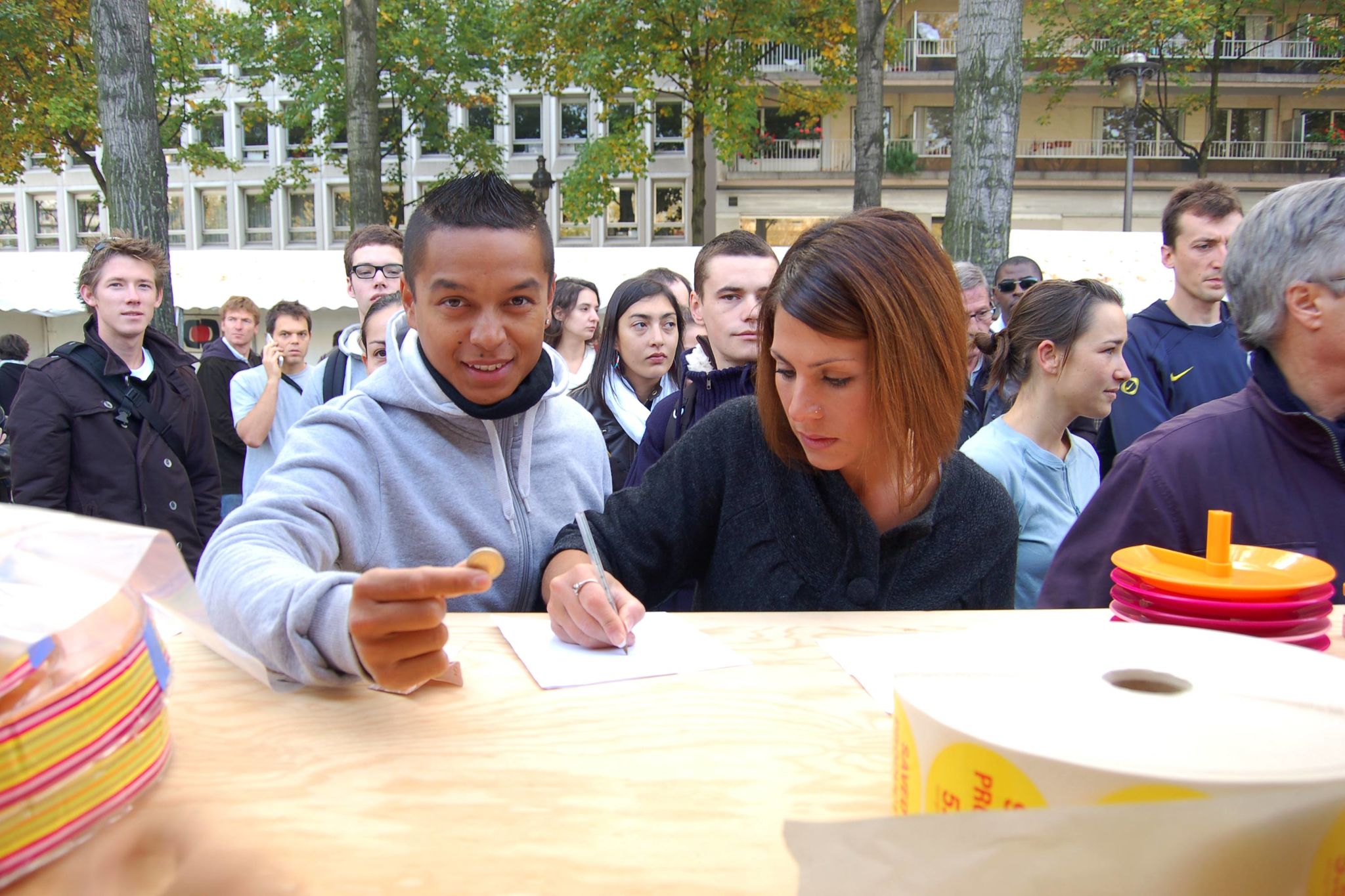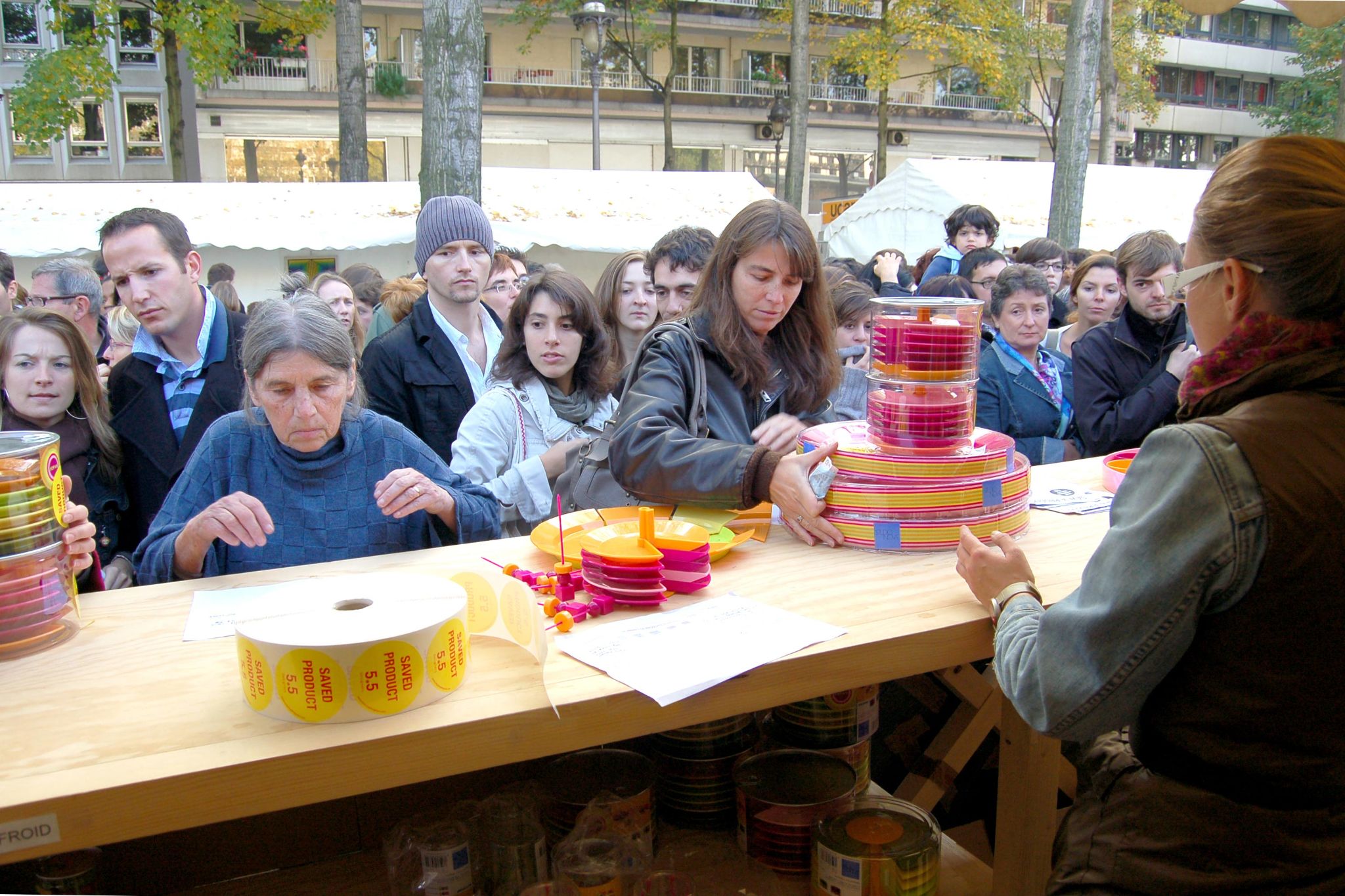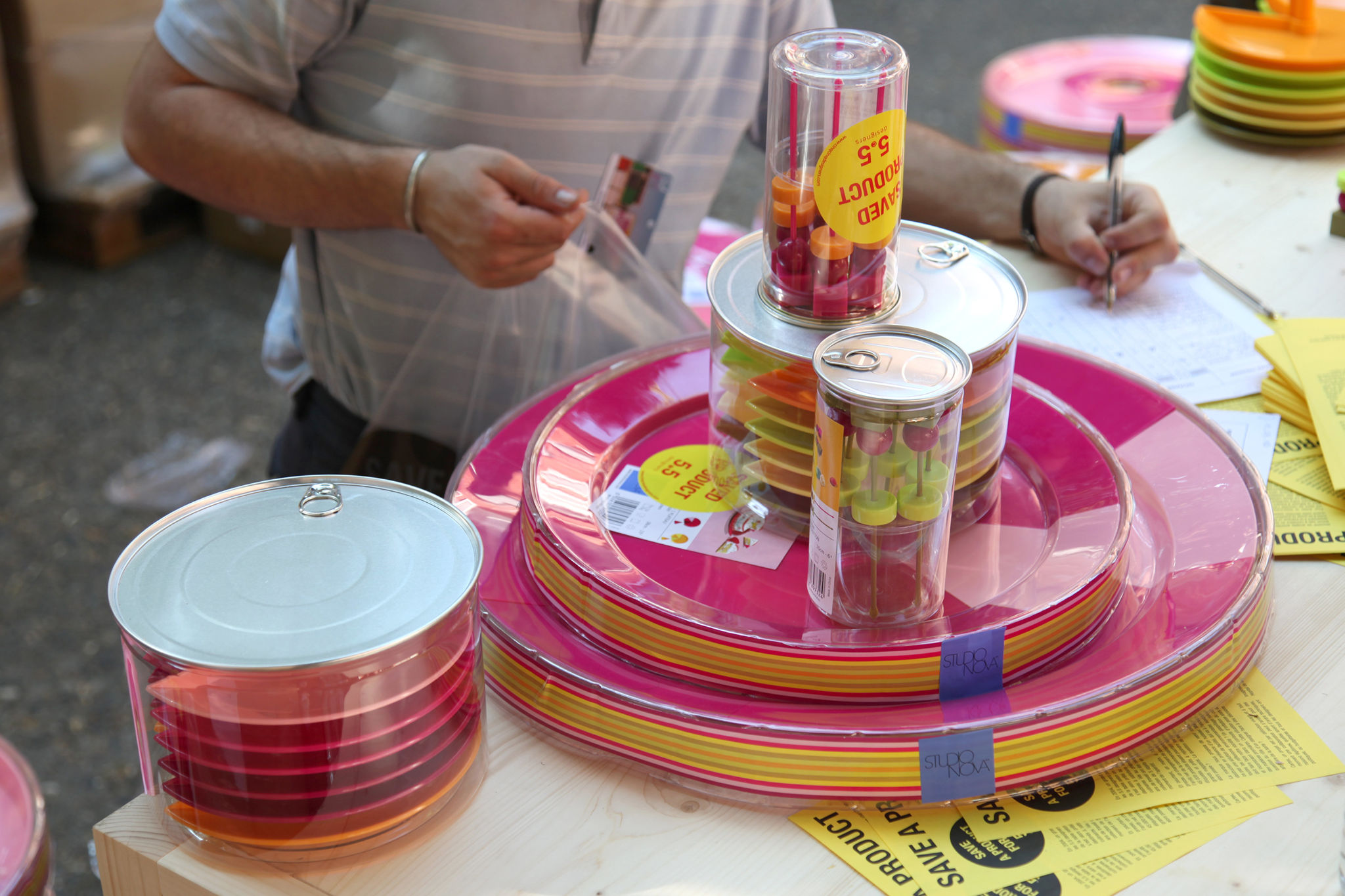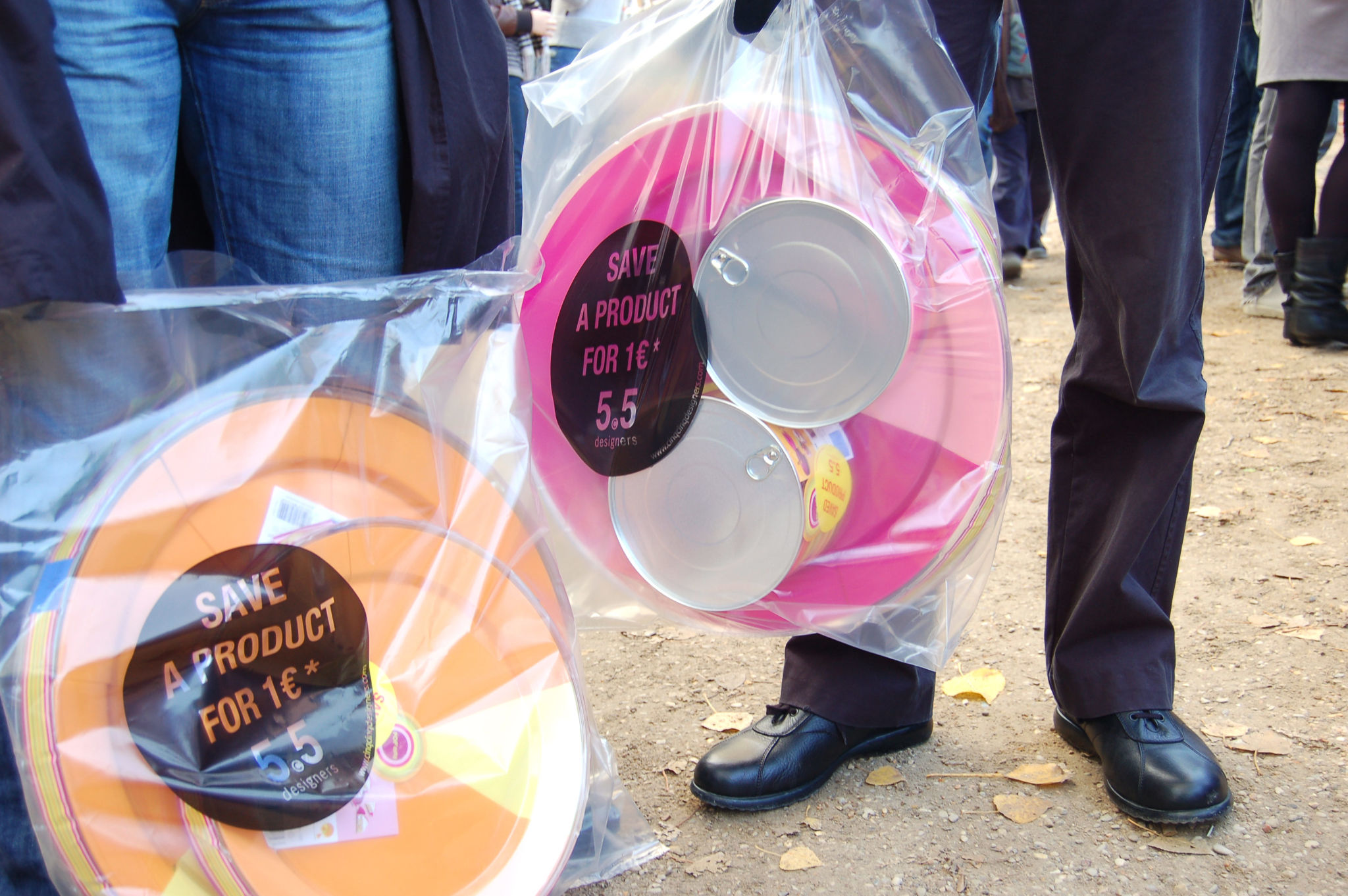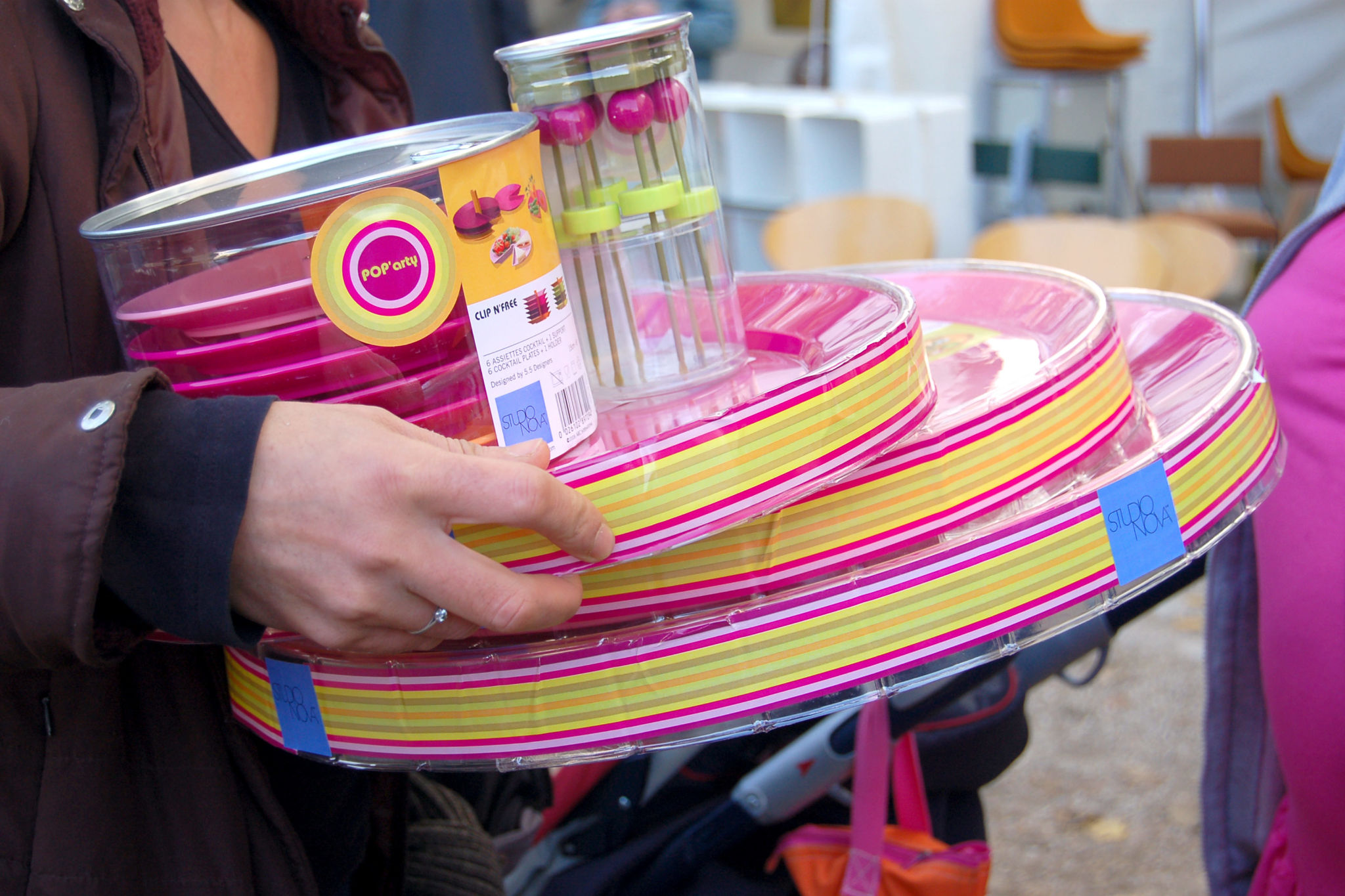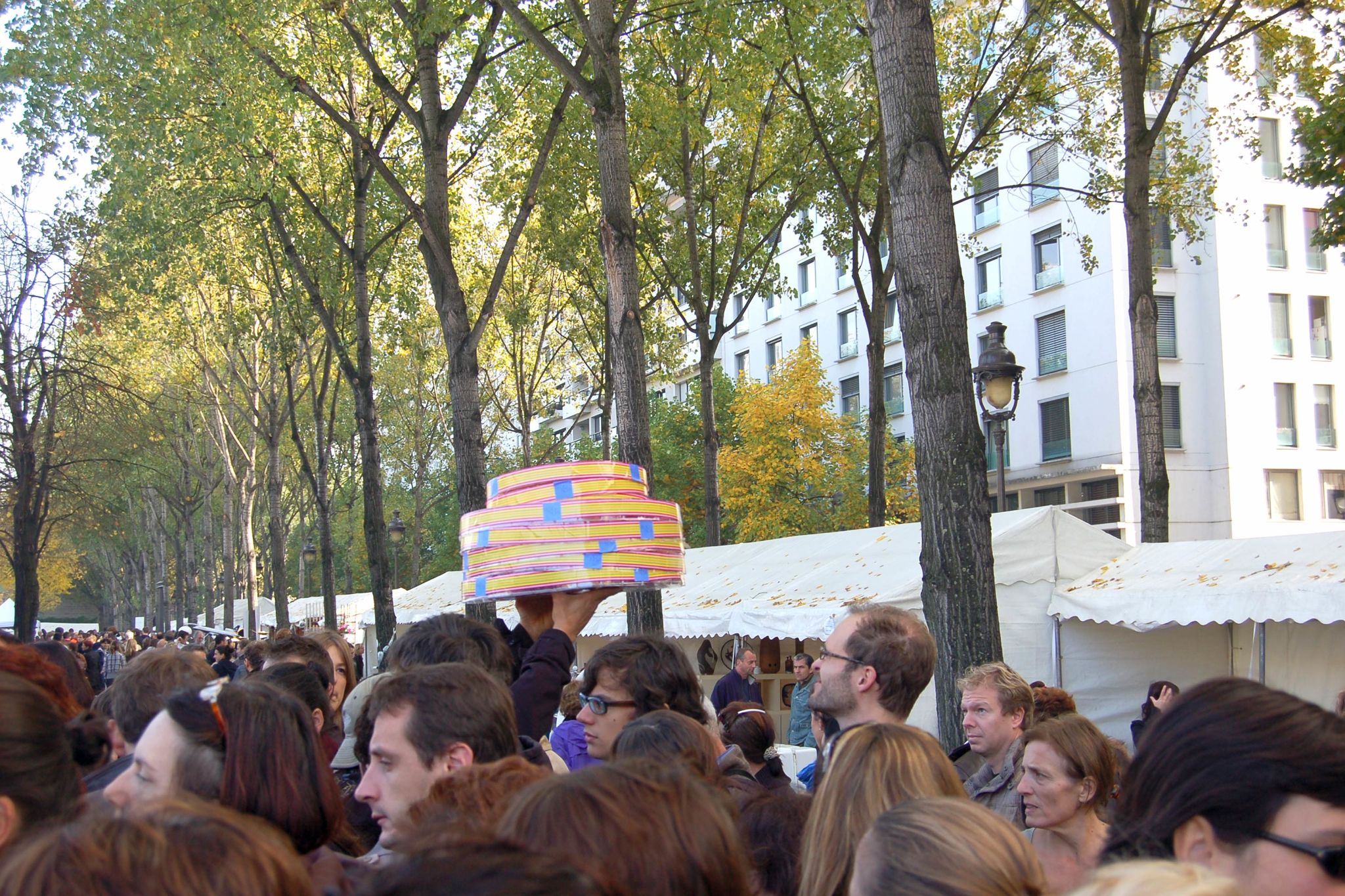Manifesto
In 2004, an important glassworker group took contact with 5•5 designers to create a a tableware decoration collection under precise and elaborated guidelines. 5•5 played along with the game by drawing products to satisfy the needs of the new culinary behaviours in connection to the phenomenon called “fooding”. Two years of work have been necessary to create a collection of objects for at this time the aperitif range all in coloured melamine.
However, one morning, only 15 days before the press launch, a change in internal functions provoked the immediate stop of commercialization of the range. The 45000 products have been fabricated, packaged, labeled and ready to join the displays of big stores. What should now happen to the future of these products?
Logically they ought to have been destroyed under a supervisor. But isn’t this the easy way out? And doesn’t it go against environmental issues that today’s society needs to face? This seems a ridiculous and a reckless waste especially when we are currently witnessing a high inflation of raw materials. This problem results in the question of what is the role of a designer when faced towards making an arbitral decision of this kind. Certainly, by definition a project is real and at all moments collaboration can be stopped for any justified motives, or for any technical, political, financial reason. All designers remember projects which have been called off. In under no circumstances do we question the decision that the brand has chosen, nor do we wish to be revengeful but just queering what ought to be at this stage the future of these products.
The bet that 5.5 is willing to take is to buy up the stock, to tell the story and to develop it into a concrete project. A series of event has led us to imagine a big liquidation, making part of the stock accessible for 1 symbolic Euro the product. We are inviting visitors to come save an object. An exceptional rescue mission has now taken shape that enables, in a pragmatic way, not to see these products destroyed by a bulldozer.
During this operation, we are demonstrating that a designer is not only responsible for the objects aesthetics but also he is a guardian and a witness. He can offer commercial alternatives at the beginning stage but likewise at the end of the journey. The most exciting part of this story was our immediate response after our first exchanges and visit to the plant.
